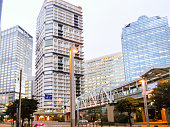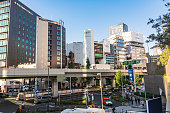
Urban Nightlife
When did nightlife begin?
Urban nightlife could be traced back to historic civilizations, however its modern type started to take shape in the late nineteenth and early twentieth centuries. Here are some key milestones in the historical past of nightlife:
1. Early Celebrations
- Ancient civilizations, such as the Greeks and Romans, had social gatherings, feasts, and festivals that always extended into the night time.
- These events have been marked by music, dance, and entertainment, laying the groundwork for later nightlife actions.
2. Rise of the Urban Center
- With the Industrial Revolution in the 18th and nineteenth centuries, city centers began to grow, resulting in a rise in population density.
- As cities became extra vibrant, establishments like taverns, dance halls, and theaters emerged.
3. Prohibition Era
- The Twenties within the United States noticed the rise of speakeasies during Prohibition, the place nightlife thrived despite legal restrictions.
- This interval highlighted the desire for socializing and leisure, further shaping urban nightlife.
4. Jazz and the Roaring Twenties
- Jazz golf equipment turned popular, bringing stay music and a vigorous ambiance to city nightlife.
- This era marked a cultural shift, with nightlife turning into extra accessible and various.
5. Late 20th Century Evolution
- The emergence of nightclubs, raves, and DJ culture within the Eighties and Nineties transformed nightlife into a worldwide phenomenon.
- Urban nightlife continued to evolve with know-how and cultural developments, embracing numerous genres and kinds.
Conclusion
In summary, while nightlife has historical roots, the colourful urban nightlife we acknowledge today started to develop in the late nineteenth century and has expanded and remodeled considerably over time.
Why do most nightclubs fail?
Most nightclubs fail because of a mix of things that may undermine their success. Here are some key causes:
1. Poor Location
- Visibility and accessibility are crucial for 하이오피 attracting patrons.
- Locations that are too removed from the nightlife hub may struggle to attract crowds.
2. Inadequate Market Research
- Understanding the audience is important.
- Failure to determine well-liked tendencies and preferences can lead to providing the mistaken sort of leisure.
3. Unsatisfactory Customer Experience
- Inconsistent service, poor workers habits, and lack of ambiance can drive customers away.
- Clubs that don't prioritize a optimistic visitor experience usually see excessive turnover charges.
4. Financial Mismanagement
- Poor budgeting and financial planning can result in operational losses.
- Failure to account for overhead prices can lead to unsustainable practices.
5. Overdependence on Alcohol Sales
- Relying solely on drink gross sales without diversifying income streams could be dangerous.
- Offering meals or unique experiences can create additional revenue opportunities.
6. Inconsistent Programming
- Shifting themes or irregular occasions could confuse regular patrons.
- Clubs need to take care of a consistent identity to construct a loyal following.
7. Competition
- The nightlife industry is very aggressive; new entrants can simply disrupt current clubs.
- Constant innovation and keeping up with opponents are essential for survival.
In essence, managing a successful nightclub requires cautious planning, adaptability, and a concentrate on delivering an distinctive experience to patrons.
What is the which means of city club?
The term metropolis club refers to a type of nightlife venue that embodies the vibrant tradition and vitality of urban areas. These clubs usually function social hubs where individuals collect to unwind, dance, and connect with others in a energetic atmosphere.
Key characteristics of a metropolis membership include:

- Location: Typically located in main cities, allowing quick access for locals and tourists alike.
- Aesthetic: A modern design that always options cutting-edge decor, lighting, and sound systems.
- Diverse Music: Offering varied genres, from electronic dance music to hip-hop, catering to a wide range of tastes.
- Social Interaction: Providing a space for folks to satisfy new friends or reconnect with old ones, emphasizing group and social engagement.
Cultural Impact
Metropolis golf equipment play a big position in shaping city nightlife by:
- Promoting native artists and DJs, thus supporting the music scene.
- Cultivating a way of belonging among patrons, fostering connections through shared experiences.
- Reflecting the dynamic nature of the city, typically adapting themes and events that resonate with present developments.
Overall, a metropolis club represents greater than only a place to celebration; it's a vital aspect of city tradition, embodying creativity, neighborhood, and the lively spirit of metropolis life.







